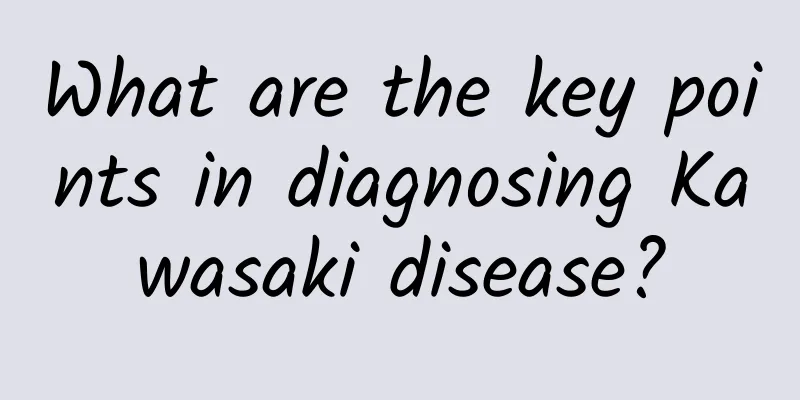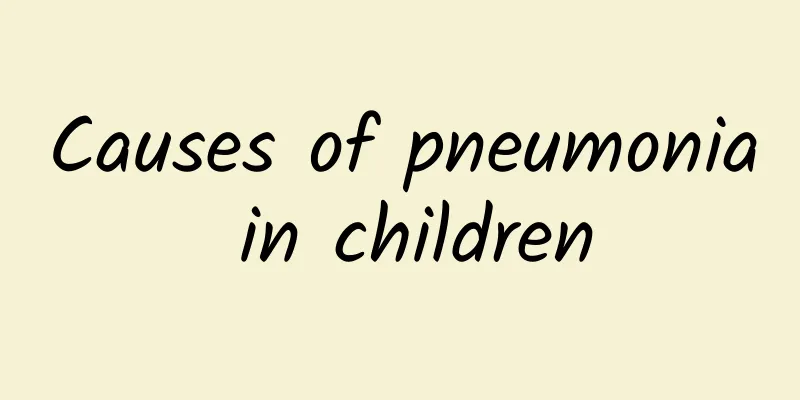What are the key points in diagnosing Kawasaki disease?

|
Many diseases appear around us. If we do not pay attention to them, many patients will not be able to receive timely treatment and their condition will be delayed. For example, Kawasaki disease. We should learn more about it in our daily life. Here we will introduce the key points of diagnosis of Kawasaki disease, hoping to help everyone better understand this disease. A preliminary diagnosis can be made based on the clinical symptoms of the disease: Generally, there are no prodromal symptoms, but the patient develops fever suddenly, presenting as remittent fever or persistent fever, which lasts for 1 to 2 weeks, usually 7 to 10 days, with an average maximum temperature of 39 to 39.9°C. A few days later, polymorphic red macules appear on the trunk, especially the perineum. It may also present as an urticarial rash with itching, but without blisters or scabs. Changes in the distal extremities are more typical. In the first week after the onset of the disease, the proximal end of the fingernails or toenails becomes pale (incomplete leukonychia), erythema appears on the palms and soles, the hands and feet are diffusely swollen, the skin is often tight and hard, and there is no depression when pressed. About 10 to 15 days after the onset of the disease, the periungual area, palms and soles begin to peel off; sometimes the epidermis falls off in clusters, revealing new normal skin underneath. About 2 months later, transverse grooves often appear on the fingernails and toenails. The entire course of the disease lasts for 2 to 12 weeks, and is often accompanied by non-suppurative lymphadenopathy. The more serious manifestation is carditis, which occurs about 10 days after discovery, when the rash, fever and other acute symptoms begin to subside. The patient is pale, cyanotic, weak, has chest tightness, precordial pain, dull heart sounds, and systolic murmurs, gallops or premature beats can be heard at the apex. Clinical, electrocardiographic, echocardiographic and radiological examinations reveal cardiac damage in about 50% of cases, including acute myocarditis, pericarditis, arrhythmias and heart failure. Non-invasive examinations have found that 20% of patients develop coronary artery aneurysms due to coronary artery inflammation. Other symptoms Other manifestations include arthritis or joint swelling and pain mainly involving large joints, iritis, otitis media, pneumonia, aseptic meningitis, abdominal pain and diarrhea, etc. Rare manifestations include hepatitis, gallbladder edema, intestinal paralysis and intestinal bleeding, pleural effusion, perianal skin flushing, peeling, cranial nerve paralysis and encephalopathy. Kawasaki disease diagnostic tests Based on clinical manifestations and excluding other diseases, the diagnosis can be established if 5 of the following 6 items are present. ⑴ Fever persists for more than 5 days. ⑵ Bilateral conjunctivae are congested. ⑶ Erythema multiforme. ⑷ Red lips, strawberry tongue; diffuse congestion of oral and pharyngeal mucosa ⑸ In the acute phase, the palms and soles are congested and edematous, and the fingertips begin to peel during the recovery phase. ⑹Acute non-suppurative cervical lymphadenopathy. |
<<: How to prevent Kawasaki disease in children
>>: How to prevent recurrence of Kawasaki disease
Recommend
What are the tips for children to use cupping to relieve cough? What should be paid attention to when using cupping to relieve cough in children?
For children with coughing symptoms, cupping can ...
Ways to avoid jaundice attacks
Every movement of a newborn affects the heart of ...
How to easily prevent diarrhea in children
Every parent hopes that their children can grow u...
What can you eat if you have polio?
Polio is a common pediatric disease. Nowadays, ma...
Can malnutrition cause delayed menstruation?
Nowadays, living conditions are better and malnut...
What are the harms of Yitanjing to children? What are the side effects of Yitanjing?
Yitanjing is a drug that can treat cough. This dr...
What are the dietary taboos for children with diarrhea? What should I do if my child has diarrhea?
Diarrhea is a very common problem. For children, ...
What are the symptoms of polio?
Many parents don't know much about diseases l...
What are the dietary principles for people at high risk of Kawasaki disease?
What are the dietary principles for people at hig...
Is polio contagious to adults?
Polio is mainly transmitted through contact, and ...
Symptoms of kidney disease in children
What are the symptoms of kidney disease in childr...
Treatment of pneumonia in children in China
Neonatal pneumonia is the most common respiratory...
How to help babies with phlegm
When the throat is damaged by viruses and bacteri...
How much does a checkup for eczema in children cost?
When our babies suffer from eczema, we mothers wi...
What are the harms of kidney disease in children to the body?
What harm does childhood kidney disease do to the...









